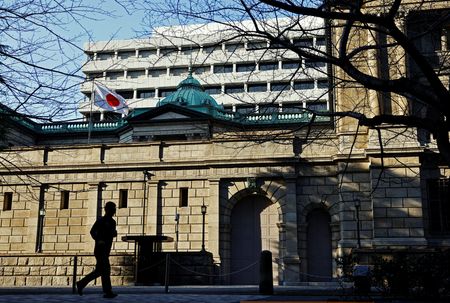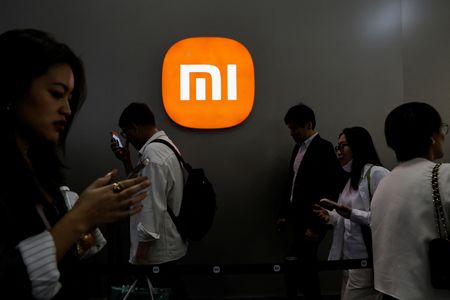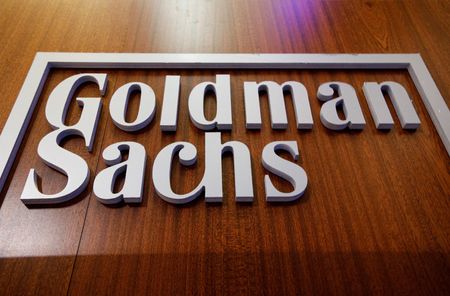By Leika Kihara
TOKYO (Reuters) -The Bank of Japan doesn’t need to make big changes to its bond taper plan and should only ramp up buying in times of “severe market disruption,” a board member said, a sign the bank sees no imminent need to arrest sharp rises in super-long bond yields.
Asahi Noguchi, a former academic regarded as one of the central bank board’s dovish members, also said the BOJ must move cautiously in raising interest rates to ensure underlying inflation stabilises around its 2% target backed by sustained wage increases.
“It’s crucial that the BOJ take a measured, step-by-step approach,” Noguchi said in a speech on Thursday, calling for the need to spend plenty of time examining the economic impact of each rate hike before moving to the next one.
Yields on super-long Japanese government bonds (JGBs) soared to all-time highs this week amid calls from politicians for big fiscal spending, potentially complicating the BOJ’s efforts to normalise monetary policy.
The BOJ last year exited a massive stimulus programme that included a policy capping bond yields around zero. It raised its short-term policy rate to 0.5% in January, on the view Japan was making progress in durably meeting its 2% inflation target.
At its policy meeting next month, the BOJ will conduct an interim review of its bond tapering plan running through March and come up with a programme for April 2026 onward.
“In my view, it is unnecessary at this point to make any major changes to the current plan,” Noguchi said.
“That said, the bank will need to examine the reduction plan for April 2026 onward from a longer-term perspective,” he said, adding that the BOJ has plenty of time to reduce the size of the balance sheet.
The BOJ allows markets to set long-term interest rates, while leaving itself some flexibility to change the amount of its bond buying “in case of sudden market swings”, Noguchi said.
“However, such an unusual measure will only be implemented during times of severe market disruption,” he said on the threshold for ramping up the BOJ’s bond buying through emergency market operations.
Fears of a U.S. tariff-induced global slowdown forced the BOJ to sharply cut its growth forecasts at its April 30-May 1 policy meeting. That has cast doubt on the view that sustained wage hikes will underpin consumption and the broader economy.
While consumer inflation has exceeded 2% for three years, Noguchi said the increase was driven mostly by rising import costs rather than prospects of sustained wage gains.
Services inflation, as measured by the consumer price index, is still far from stably exceeding 2%, suggesting that many firms have yet to pass on rising wage costs, Noguchi said.
“As the boost to inflation from rising import costs dissipates, we must see services price inflation exceed 2% for Japan to sustainably and stably achieve our price target,” Noguchi said.
(Reporting by Leika Kihara and Chang-Ran Kim; Editing by Sonali Paul and Edwina Gibbs)









